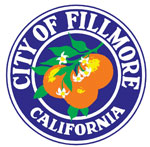|
By Joyce Schifanelli — Wednesday, February 4th, 2009
What is the Housing Element? Simply put, the Housing Element, a component of a city’s General Plan, is a blueprint for housing ratios in towns and cities from very low, to above moderate income groups. Upon studying a region’s demographics and other influencing factors such as labor categories (white collar, blue collar, farm-worker), wages, unemployment statistics, senior, disabled and homeless populations, available housing in all categories, vacancy rates, overcrowding, land use and environmental restrictions etc., State and regional agencies mandate cities and towns across California to adhere to guidelines when creating their Housing Elements. State law, enacted in 1969 requires jurisdictions to address needs of all income groups. California Department of Housing and Community Development (HCD) defined those needs, and local governments must adopt without undue constraint, land use plans and regulatory systems that provide opportunities for housing development by private enterprise. The Housing Element is not an official Affordable Housing document, but a means of identifying the housing needs of a community. It states the community’s goals and objectives regarding housing production, rehabilitation and conservation and defines the policies and programs the community will implement to achieve those standards. CONTINUED » |
 The One Step Teen Drop-In Center in conjunction with Fillmore Options celebrates its Grand Opening Saturday, February 7th from 11am to 3pm., 828 Ventura Street, with the reception to follow at the Chocolate Church, above, 1pm, 600 Saratoga & 2nd Street. Enlarge Photo By Anonymous — Wednesday, February 4th, 2009
The One Step Teen Drop-In Center in conjunction with Fillmore Options celebrates its Grand Opening Saturday, February 7th from 11am to 3pm. One Step A La Vez is a committee composed of 12 high school youth who started in 2004 to look into improving mental health care for the youth of Fillmore and Piru. The name One Step A La Vez was chosen by the youth committee in 2005 to show that you can always take One Step At A Time toward a positive future. It is in both English and Spanish to reflect and value the dual heritage of our community. One Step officially opened its doors this past September and is now fully operational with a computer lab, Wii video games, foosball, as well as ongoing classes in cooking, nutrition, group, creative expression, career and college preparation and yoga. February 7th is our chance to let the community know about what we have to offer, to thank the community, and to celebrate all of the local support we have received over the past four years. There will be a raffle, canned food drive, bake sale, dancing, food, and games for the whole family. A formal opening will begin February 7, 11am at Fillmore Options Counseling Center, 828 Ventura St., with the reception to follow at 1:00 at 600 Saratoga and Second St. at the Chocolate Church hall. Please come help us celebrate four years of dedication and support for Fillmore's youth. |
|
By Anonymous — Wednesday, February 4th, 2009
 City Council Member and former Mayor Steve Conaway stands in front of the city’s new, almost full, swimming pool. The pool’s chemistry is being adjusted, and the high school swimming team has already had a dip. The state-of-the-art swimming pool-tennis complex will be open for business in April. Enlarge Photo |
|
By Mariandrea Mueller — Wednesday, February 4th, 2009
The open session of the Fillmore Unified School District (FUSD) Board meeting was February 3, 2009, at 6:00 p.m. in the Board Room at the District Office. The Board discussed actions they are taking to ensure that FUSD has enough money to operate, and heard a report on FUSD's independent study program. Sierra High School Principal Tony Held presented a report on the independent study program. There are currently 32 students in the program: one Fourth Grader, two Eighth Graders, one Freshman, and multiple Juniors and Seniors. Eleven students are scheduled to graduate this year: six before June and five in June. Graduation requires 230 credits, and the students are limited to 40 credits per semester. Fillmore High School (FHS) students usually take 30 credits per semester. Held noted that the program is not easy. Each independent study student meets with the teacher weekly, and is assigned a work packet designed to be completed in approximately 20 hours. The teacher, who covers all subjects but has a slight weakness in math, is available to answer questions throughout the week. Held explained that there is no money in the budget for an FHS math teacher to help out, and that volunteer peer tutors have so far not been available. CONTINUED » |
 Pictured above are the three finalist in this years Spelling Bee: Lupita Perez, Dillon Galarza, and Emma Godfrey. Congratulations! Enlarge Photo By Anonymous — Wednesday, January 28th, 2009
For the first time in Sespe school history, there was a three-way tie for the annual Scripps National Spelling Bee competition. Twelve students were vying for the championship this year. The competitors consisted of Fifth Graders Anthony Cardoza, Emily Garnica, Sereth Malagone, Lu pita Perez, and Serena Rivas. The Fourth Grade competitors were Viviana Ceja, Brenda Delgado, Dillon Galarza, Emma Godfrey, Alana Juarez, Gerardo Sandoval, and Leighanne Thompson. The Spelling Bee was open to all fourth and fifth graders, but in order to be a contestant, a student needed to pass a written spelling test with a score of 80% or better. The remaining twelve contestants were each issued a Merriam-Webster 2009 “Spell It!“ book containing the official spelling bee words. The book contains fourteen word lists from Eponyms (words based on a person’s or character’s name) to thirteen different language origins; Latin, Arabic, Asian Languages, French, German, Slavic Languages, Dutch, Old English, New World Languages, Japanese, Greek, and Italian. CONTINUED » |
|
By Joyce Schifanelli — Wednesday, January 28th, 2009
Fillmore’s new $1.1 million skateboard park is the centerpiece a 22-acre multi purpose Community Park, a vision presented by City officials eight years ago. The skate park, in Phase I of the 22,000 total square foot Community Park, is located at C and River Streets. It has attracted record crowds from as far away as Santa Barbara and San Diego along with local skaters of all ages and experience levels since its unofficial opening on December 22, 2008. Reviews on the skateboard park have been very favorable! The superiority of the state of the art facility is credited in part to 15 year-old Christian Conaway, multi-medalist street- luge racer including, 1st place in the North American Championships and 6th place in the World Championships in 2008, and his association with skateboarding legend Jeff Tatum. Tatum’s consulting and design expertise together with Scott Price of Community Works Design Group, and builders, California Skateparks, led to scrapping original plans for a wooden structure, and creation of the concrete facility. Councilman Steve Conaway, former Mayor of Fillmore, was an aggressive proponent of the project. Although father and son are both skateboarders, the senior Conaway who “long boards” for recreation only admits, “my greatest trick is to not fall. Sometimes I succeed.” CONTINUED » |
|
By Dick Diaz — Wednesday, January 28th, 2009
Yeoman Petty Officer 2nd Class Claudia Toledo, USN Active Reserves received the Department of the Navy’s “Navy and Marine Corps Achievement Medal” during a ceremony at Port Hueneme! Yeoman Petty Officer 2nd Class (YNPO2) Claudia Toledo received this award on December 7, 2008 for her professional achievement in the superior performance of her duties while serving as a Yeoman Clerk with Navy Cargo Handling Battalion 14 stationed at Port Hueneme. YNPO2 Toledo’s battalion is a component of the Naval Expeditionary Logistics Support Group located in Williamsburg, Virginia where YNPO2 Toledo is now attending an advanced training class. Yeoman Petty Officer 2nd Class Claudia Toledo joined the Navy Reserves in 2003 and she is the daughter of Ignacio and Maria Toledo of Fillmore and the mother of Salma 9yrs. Maria and Salma will be traveling to Virginia soon to visit YNPO2 Toledo while she attends her courses. CONTINUED » |
 Pictured (l-r) Sammy Estrada, Mrs. Dressler, Perla Chavez Hernandez, Taylor Wright, Destiny Alonzo, Cindy Klittich, and Mayor Patti Walker. The children above are the winners of the essay contest sponsored by the Fillmore Civic Pride Committee. Enlarge Photo By Mariandrea Mueller — Wednesday, January 28th, 2009
The Fillmore City Council Meet January 27th, 2009
 Pictured above are City of Fillmore’s Employee’s of the Quarter for October - December: Arnold Castaneda, David Brown and Joe Zuniga. Enlarge Photo Fillmore City Council met at 6:30 p.m. Tuesday, January 27, 2009 at City Hall. Council Member Laurie Hernandez was absent. The Council honored certain city employees, recognized winners in a student essay contest, received updates on the Central Ave. Storm Drain Project, adopted safety laws for the new skate park, and discussed the Special Projects Manager position. Mayor Patti Walker, on behalf of the Council, presented awards to city employees. Employee of the July-September 2008 Quarter was Angela Mumme for her outstanding work, positive attitude, and friendly disposition. Employees of the October-December 2008 quarter were Joe Zuniga, Ray Morales, Jaime Magdaleno, Arnold Castaneda, and David Brown. Those five employees were called to duty on New Year's Eve to repair a broken water main. Water was restored by morning. Employee of the Year 2008 was Angela Mumme. She responded, "I'm flattered considering the quality of the people I work with." Judy Dressler, Chair of the Vision 2020 Civic Pride Committee, presented awards to winners of The Fillmore Civic Pride Essay Contest. The contest was open to 4th and 5th Grade students who submitted 200-word essays on "Why I Like Living in Fillmore." Liz Ocampo won First Place. Diego Aparicio Rodrigues won Second Place. Mirella Lemus won Third Place. Honorable Mentions were received by Perla Chavez-Hernandez, Sammy Estrada, Andrea Diaz, Destiny Alonzo, and Taylor Wright. Deputy City Manager Bill Bartels said that Central Ave. will be re-opened Monday February 2nd. Crosswalks will be restored before the project to repave Central Ave. from Sespe St. to Highway 126 starts. The project has gone out to bid and paving will occur in late April or early May. Rubberized asphalt will be used. Because the price of asphalt has decreased, the city will also make sidewalk repairs. Large signs advertising downtown Fillmore have gone up adjacent to Highway 126. CONTINUED » |
 Last Saturday at around 7:30 a.m. a fire broke out in the Santa Clara riverbed. The fire burned about 5 acres, but was contained by 10:00 a.m., even with the Santa Ana winds. Several fire departments and other agencies were called out including a helicopter to help extinguish the flames. Enlarge Photo By Anonymous — Wednesday, January 21st, 2009
|
|
By Mariandrea Mueller — Wednesday, January 21st, 2009
 School Board President John Garnica with Norma Perez-Sandford. Perez-Sandford received “Be the Change” certificate at Tuesday night’s meeting. Enlarge Photo  School Board President John Garnica with Kirk Richter. Kirk Richter received “Be the Change” certificate at Tuesday night’s meeting. Enlarge Photo The open session of the Fillmore Unified School District (FUSD) Board meeting was January 20, 2009, at 6:00 p.m. in the Board Room at the District Office. The Board presented awards to Norma Perez-Sanford and Kirk Richter, discussed grading policies, heard Sespe Players' proposal for facilities' use, approved an e-rate proposal, heard a budget update, and discussed Fillmore High School (FHS) track and field use. Sierra High School (SHS) Principal Tony Held introduced Norma Perez-Sanford, school counselor for SHS and FHS. Perez-Sanford said that she was guided by God, she loved the community and her work, and was honored. She spoke about the importance of mentors and role models in school. FHS Principal John Wilber introduced FHS teacher Kirk Richter. Richter started a Ventura College agriculture class at the high school to simultaneously teach students landscaping and improve the appearance of FHS's campus. He hopes that the class will continue in the fall. Board President John Garnica, on behalf of the Board, presented "Be the Change" certificates to both honorees for their outstanding work. Principal Wilber and FHS Counselor Al Arguelles presented FHS's policy on credits and grading for Advanced Placement (AP) and College courses. The policy was designed to encourage students to go to college, and help them get there. AP courses receive an extra .5 credit for calculation of GPA. College courses that are transferable to universities in the U.C. system receive an extra .5 credit and college units for those courses are multiplied by 3.3 to determine the number of high school units credited. According to Board Policy 5127, Honors classes count A's as 5 points, B's as 4 points, etc. There was some controversy in the discussion regarding the rigor of various courses, and whether GPA rankings could be manipulated by a student's choice of classes. Garnica noted that the top 5% of the graduating class is guaranteed admission to a U.C. school. Arguelles explained that students and parents are aware of their options, and that colleges consider transcripts, which list the specific classes taken, when making admissions decisions. CONTINUED » |





















